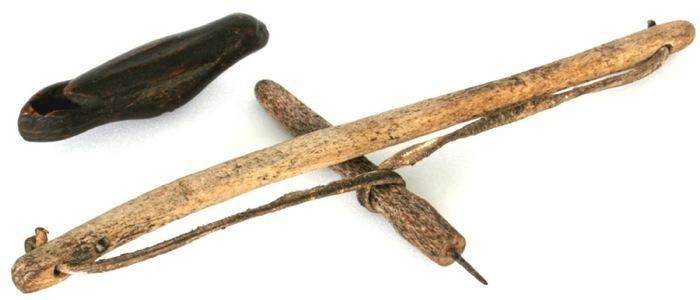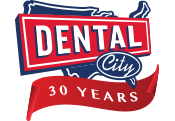
Recently a member of the Dental City team sent me an interesting article. It proposed that humans have been drilling teeth for nearly 100 centuries!
Scientists conducting research in a Neolithic (end of the Stone Age) graveyard in Pakistan discovered nine skulls that had molars with holes 1-3mm in diameter. These holes had concentric ridges that indicated they were created by drilling and not just an attempt to scrape out any decay.
Based on knowledge of tools some indigenous peoples still use today, researchers believe this drilling was accomplished with a tool called a drill-bow. A drill-bow is a simple structure built from two sticks, a length of cord, and a sharp piece of stone. The two sticks are held perpendicular to each other like when an arrow is notched on a bow by the length of cord. By moving the “bow” back and forth the perpendicular stick rotates like a drill. Below is a slightly more modern representation.

Photo courtesy of: http://www.dentalassistantschools.net/blog/13-creepy-old-school-dental-instruments/
This technology was revolutionary for the time and would’ve been a huge advancement in the treatment of dental caries.
However, there is more to treating caries than simply removing the decayed part of the tooth. Not sure about you, but I know I wouldn’t want to have one of my teeth drilled without anesthetic or have a gaping hole left in it!
Before modern anesthesia, one of the most commonly used pain-relievers was coca leaves, which have been proved to be used prominently in South America. If coca leaves weren’t available other medicinal plants were substituted.
And there is even evidence that dental fillings got a prehistoric start as well. In Italy researchers at the International Centre for Theoretical Physics were testing a 6,500-year-old jaw bone with some new 3D Imaging Technology when they saw something unusual attached to one of the teeth.
It was a mound of beeswax that had been used to plug a hole in the enamel. Obviously, with no amalgam or composites to use as fillings prehistoric humans had to get a little more creative. And it turns out beeswax, which is soft when warmed and solid at human body temperature, was a pretty ingenious filling substance. It even has antibacterial and anti-inflammatory properties.
At the end of the day, though, I think we can all be very thankful for modern dental medicine!
Source:
http://www.bbc.com/earth/story/20160229-how-our-ancestors-drilled-rotten-teeth

